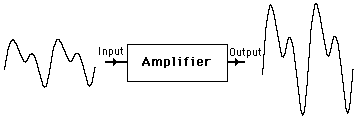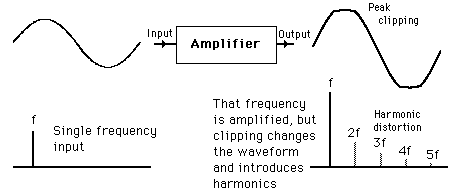Amplifiers
The task of an audio amplifier is to take a small signal and make it bigger without making any other changes in it. This is a demanding task, because

a musical sound usually contains several frequencies, all of which must be amplified by the same factor to avoid changing the waveform and hence the quality of the sound. An amplifier which amplifies all frequencies and amplitudes by the same factor is said to be linear. Departures from linearity lead to various types of distortions.
Sound reproduction concepts
| HyperPhysics***** Sound | R Nave |

